Welcome to the Human Anatomy Laboratory Manual with Cat Dissections by Elaine Marieb, a comprehensive guide designed for students to explore human anatomy through hands-on dissection exercises․ This manual offers a systematic approach to understanding anatomical structures, aligning with Marieb’s renowned textbooks․ With detailed instructions and full-color visuals, it provides an engaging and interactive learning experience, perfect for laboratory settings․
1․1 Purpose and Scope of the Manual
The primary purpose of the Human Anatomy Laboratory Manual with Cat Dissections is to provide students with a hands-on, interactive approach to learning human anatomy․ Designed for one-semester courses, this manual offers a structured and comprehensive guide to exploring anatomical structures through dissection exercises․ The scope includes 29 exercises covering all major body systems, such as the skeletal, muscular, and nervous systems․ Each exercise is supported by clear instructions, full-color illustrations, and alignment with Elaine Marieb’s textbooks․ This manual serves as a standalone resource or can be paired with other teaching materials, ensuring flexibility for instructors․ Its engaging writing style and visual aids make complex concepts accessible, fostering a deeper understanding of human anatomy for students at all skill levels․
1․2 Author Background: Elaine Marieb
Elaine Marieb, a distinguished educator and author, has made significant contributions to the field of anatomy and physiology․ Holding a master’s degree in biology from SUNY Geneseo, Marieb has taught at various institutions, including the University of Massachusetts․ Her expertise in making complex scientific concepts accessible has led to the creation of renowned textbooks․ Known for her clear and engaging writing style, Marieb has authored several influential works, including the Human Anatomy Laboratory Manual with Cat Dissections․ Her dedication to education has earned her recognition as a leader in science education, helping countless students grasp human anatomy through hands-on learning and visual aids․ Marieb’s work continues to be a cornerstone in anatomy education, ensuring students gain a deep understanding of human structures and their functions․
1․3 Setting Up the Laboratory Environment
Setting up a well-organized and functional laboratory environment is essential for effective learning in anatomy․ The manual emphasizes the importance of proper workspace preparation, including necessary tools and safety protocols․ Students are advised to ensure access to dissecting instruments, gloves, and protective eyewear to maintain a safe and hygienic workspace․ The lab environment should be well-ventilated to handle dissection odors and equipped with microscopes and digital tools for detailed observations․ Clear labeling and organization of materials are stressed to streamline the dissection process․ Additionally, the manual recommends having reference charts and anatomical models nearby for comparison and guidance․ A structured and prepared laboratory environment fosters focus, efficiency, and a positive learning experience for students engaging in cat dissections and other anatomical studies․
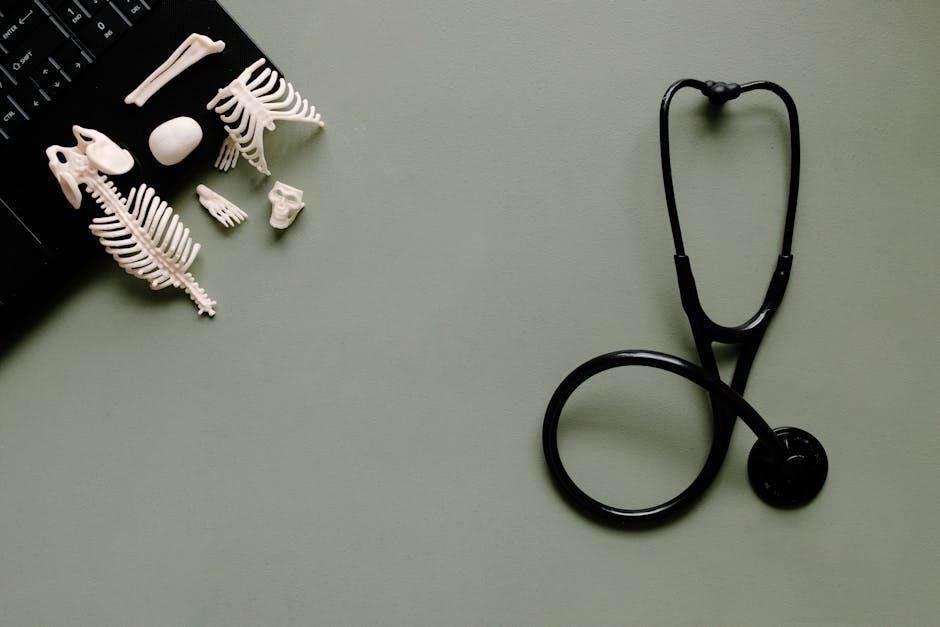
Key Features of the Laboratory Manual
This manual offers a clear, engaging writing style, full-color illustrations, and alignment with Marieb’s textbooks․ It includes digital resources, dissection guides, and exercises covering all body systems for a comprehensive learning experience․
2․1 Engaging Writing Style and Clarity
Elaine Marieb’s Human Anatomy Laboratory Manual with Cat Dissections is renowned for its clear, concise, and engaging writing style, making complex anatomical concepts accessible to students․ The manual’s clarity ensures that even intricate structures are presented in an understandable manner, fostering a deeper comprehension of human anatomy․ Marieb’s expertise in anatomical education shines through, as the text is both informative and approachable, catering to diverse learning styles․ The writing complements the visual aids and dissection exercises, creating a cohesive and interactive learning experience․ This clarity is particularly beneficial for students conducting hands-on dissections, as it guides them through procedures with precision and confidence․ The manual’s engaging style not only enhances retention but also motivates students to explore anatomy with enthusiasm, making it an indispensable resource for laboratory settings․
2․2 Full-Color Illustrations and Visual Aids
The Human Anatomy Laboratory Manual with Cat Dissections by Elaine Marieb features an extensive collection of full-color illustrations and visual aids, which are essential for understanding complex anatomical structures․ These high-quality visuals provide detailed depictions of cat anatomy, closely mirroring human structures, making them an excellent tool for comparative study․ The illustrations are meticulously labeled, highlighting key features and relationships between different body systems․ Accompanying diagrams and photographs guide students through dissection procedures, ensuring clarity and precision․ The visual aids are designed to complement the manual’s text, offering a multi-modal learning experience that enhances retention and comprehension․ Marieb’s use of vibrant, anatomically accurate images makes the manual a valuable resource for students navigating the intricacies of human anatomy through cat dissections․
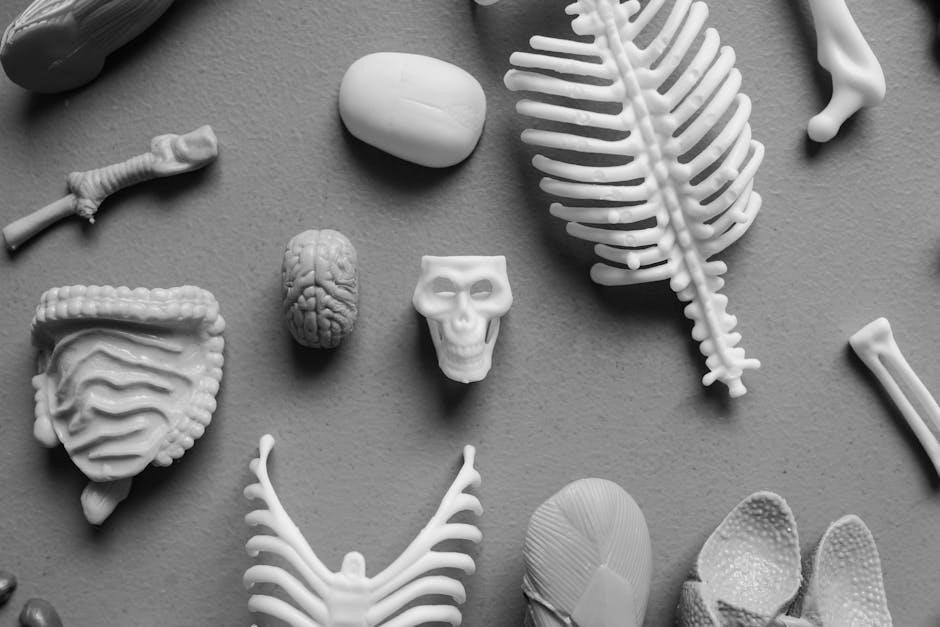
2․3 Alignment with Marieb’s Human Anatomy Textbooks
The Human Anatomy Laboratory Manual with Cat Dissections is carefully aligned with Elaine Marieb’s renowned human anatomy textbooks, ensuring a seamless integration of theoretical knowledge with practical application․ The manual’s content mirrors the structure and terminology used in Marieb’s textbooks, such as Human Anatomy and Human Anatomy & Physiology․ This alignment allows students to reinforce concepts learned in lecture and textbook readings through hands-on dissection exercises․ The lab manual’s exercises and visuals complement the textbooks’ detailed explanations, creating a cohesive learning experience․ Whether used as a standalone resource or in conjunction with Marieb’s texts, the manual provides a comprehensive and structured approach to mastering human anatomy through comparative cat dissections․
2․4 Integration of Digital Resources
The Human Anatomy Laboratory Manual with Cat Dissections seamlessly integrates with Mastering A&P, Pearson’s digital learning platform, offering enhanced interactive features․ Pre-lab video coaching activities guide students through complex dissections, while bone, muscle, and dissection videos provide visual reinforcement of anatomical concepts․ The manual also includes access to digital tools such as 3D models, quizzes, and assignable activities, allowing students to explore anatomy in depth․ These resources are designed to complement the lab manual, fostering a dynamic and engaging learning experience․ By combining hands-on dissection with digital media, the manual ensures that students can master human anatomy both in the lab and beyond, making it an essential resource for modern anatomy education․
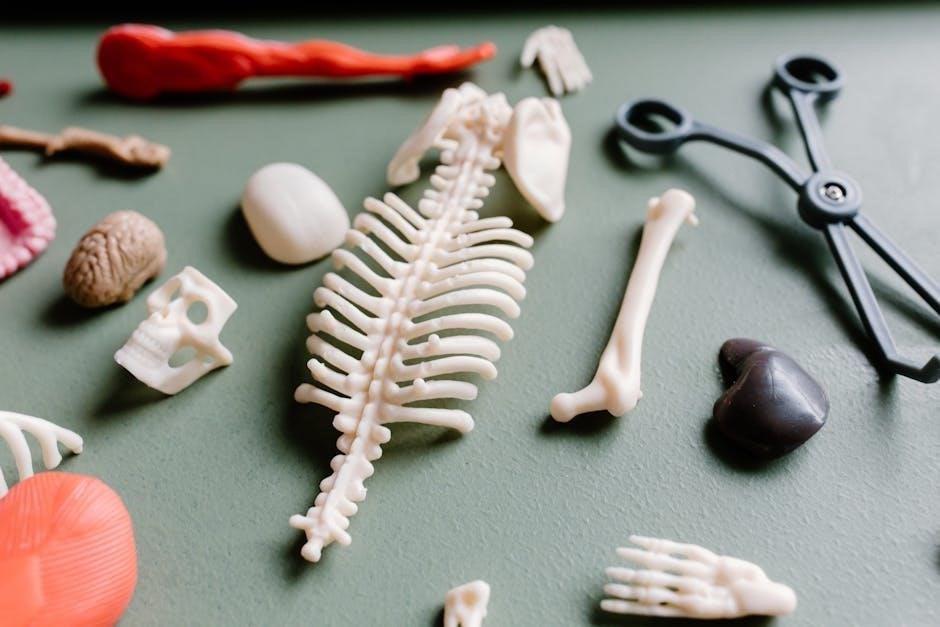
Overview of Body Systems Covered
This manual provides a detailed exploration of major body systems, including the skeletal, muscular, nervous, and digestive systems, through cat dissections, offering a hands-on understanding of human anatomy․
3․1 Skeletal System
The skeletal system section of the manual provides a detailed exploration of the bones and their structures, using cat dissections to mirror human anatomy․ Students examine the axial and appendicular skeletons, identifying bones like the skull, vertebrae, and limb bones․ Full-color illustrations and dissection guides help distinguish bone features, such as foramina, condyles, and sutures․ This hands-on approach allows learners to understand the functional and structural roles of bones in movement and support․ The exercises align with Marieb’s textbook, ensuring a cohesive learning experience․ By comparing cat and human skeletons, students gain insights into anatomical similarities and differences, reinforcing their understanding of human osteology․
3․2 Muscular System
The muscular system section delves into the structure and function of muscles, utilizing cat dissections to provide a comparative perspective with human anatomy․ Through detailed dissections, students identify major muscle groups, such as those in the neck, limbs, and abdominal regions․ The manual emphasizes the arrangement of muscles into layers and their attachments to bones, highlighting their role in movement․ Full-color illustrations and step-by-step guides facilitate understanding of muscle origins, insertions, and actions․ This hands-on approach helps students appreciate the complexity of muscle anatomy and their functional roles in the body․ By correlating cat dissections with human anatomy, learners gain a deeper appreciation for the evolutionary similarities and differences in muscle structure and function․
3․3 Nervous System
The nervous system section of the manual provides a detailed exploration of neural structures and their functions, leveraging cat dissections to illustrate key concepts․ Through hands-on activities, students examine the brain, spinal cord, and peripheral nerves, comparing feline anatomy to human nervous systems․ Full-color illustrations and clear descriptions guide learners in identifying neural pathways and understanding the organization of the central and peripheral nervous systems․ Practical exercises focus on the dissection of nerve plexuses and sensory organs, highlighting their roles in sensory input and motor responses․ This section emphasizes the intricate connections between neural components and their functional significance in controlling bodily processes․ By dissecting and analyzing nervous system structures, students gain a comprehensive understanding of its complexity and importance in maintaining overall physiological harmony․

Dissection Exercises and Guides
This section provides 30 detailed dissection exercises covering all body systems, with clear instructions and full-color visuals to enhance understanding and hands-on learning experiences․
4․1 Skeletal System Dissection
The skeletal system dissection exercises in Elaine Marieb’s manual provide a detailed exploration of the cat’s skeletal anatomy, serving as an effective alternative to human cadaver dissection․ Students examine key bones, including the skull, vertebral column, and limb bones, to understand their structure and function․ The exercises emphasize bone identification, joint examination, and the differentiation between axial and appendicular skeletal components․ Clear step-by-step instructions guide learners through dissection techniques, while full-color illustrations enhance comprehension․ The manual aligns with Marieb’s textbooks, ensuring a cohesive learning experience․ Additional resources, such as digital dissection videos, further support student understanding of skeletal anatomy․ This section is designed to foster a deep appreciation of the skeletal system’s role in human anatomy, making it an invaluable tool for laboratory study․
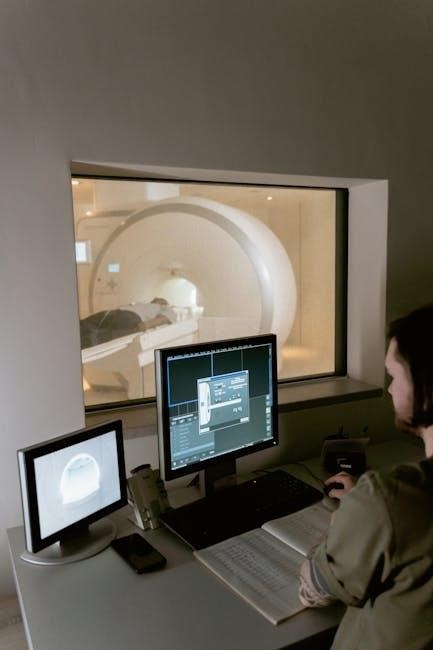
4․2 Muscular System Dissection
The muscular system dissection in Elaine Marieb’s manual provides a comprehensive exploration of feline musculature, offering insights into human anatomy․ Students dissect and identify major muscle groups, including flexors, extensors, and abdominal muscles, gaining insights into their functions and relationships․ The exercises emphasize the study of muscle origins, insertions, and actions, with detailed instructions and full-color illustrations to enhance understanding․ The manual correlates with Marieb’s textbooks, ensuring a cohesive learning experience․ Digital resources, such as muscle dissection videos, complement the lab work, while supplementary materials like the instructor’s guide and student workbook support deeper engagement; This section is designed to help students master the complexities of the muscular system through hands-on dissection and analysis․
4․3 Digestive System Dissection
The digestive system dissection in Elaine Marieb’s manual provides a detailed exploration of the feline digestive anatomy, offering valuable insights for human anatomy studies․ Students examine the structure and function of key organs, including the mouth, esophagus, stomach, small intestine, liver, and pancreas․ The exercises guide learners through the dissection process, emphasizing the identification of digestive enzymes, absorption mechanisms, and the role of accessory organs․ Full-color illustrations and clear instructions enhance understanding, while alignment with Marieb’s textbooks ensures a cohesive learning experience․ Digital resources, such as dissection videos, further support student engagement․ This section is designed to help students master the complexities of the digestive system through hands-on dissection and analysis․
4․4 Nervous System Dissection
The nervous system dissection exercises in Elaine Marieb’s manual provide an in-depth exploration of the feline nervous anatomy, mirroring human structures․ Students examine the brain, spinal cord, and peripheral nerves, gaining insights into neural pathways and reflex arcs․ The manual’s clear instructions and full-color illustrations guide learners through the identification of key features, such as the cerebral cortex, cerebellum, and nerve plexuses․ Digital resources, including dissection videos, enhance understanding of complex neural connections․ This section emphasizes the functional relationship between the central and peripheral nervous systems, offering a hands-on approach to mastering nervous system anatomy․ By aligning with Marieb’s textbooks, the exercises ensure a comprehensive and integrated learning experience, preparing students for advanced studies in human anatomy and physiology․

Supplementary Resources and Materials
The manual is supported by an instructor’s guide, student workbooks, and online platforms offering digital tools, videos, and interactive features to enhance learning and engagement in the laboratory setting․
5․1 Instructor’s Guide and Answer Key
The Instructor’s Guide and Answer Key is a valuable resource designed to support educators in effectively teaching human anatomy using the laboratory manual․ It provides detailed lesson plans, teaching strategies, and assessment tools to enhance classroom and lab instruction․ The guide includes answers to all exercises, review questions, and lab reports, ensuring accurate grading and feedback․ Additionally, it offers tips for facilitating dissection activities and engaging students․ This comprehensive tool aligns perfectly with the lab manual, making it easier for instructors to prepare and deliver courses․ Whether for experienced educators or those new to teaching anatomy, the guide serves as an indispensable companion, promoting a structured and successful learning environment for students․
With its organized format and thorough content, the Instructor’s Guide and Answer Key is essential for maximizing the educational potential of the laboratory manual․
5․2 Student Workbook and Lab Reports
The Student Workbook and Lab Reports are essential companions to the laboratory manual, offering activities and exercises tailored to reinforce anatomical concepts․ Designed to complement the hands-on dissection experience, the workbook includes review questions, labeling exercises, and space for note-taking․ It also provides structured lab report templates, guiding students in documenting their observations and findings during dissection activities․ The workbook aligns with the lab manual’s content, ensuring a cohesive learning experience․ Additionally, it encourages active participation and critical thinking through self-assessment tools and reflective prompts․ Available in both physical and digital formats, the workbook is adaptable to different learning styles, making it a valuable resource for students to master human anatomy․ Its organized structure and practical exercises help students develop a deeper understanding of anatomical structures and their functions․
This resource is integral to achieving success in the anatomy laboratory course․
5․3 Online Learning Platforms and Tools
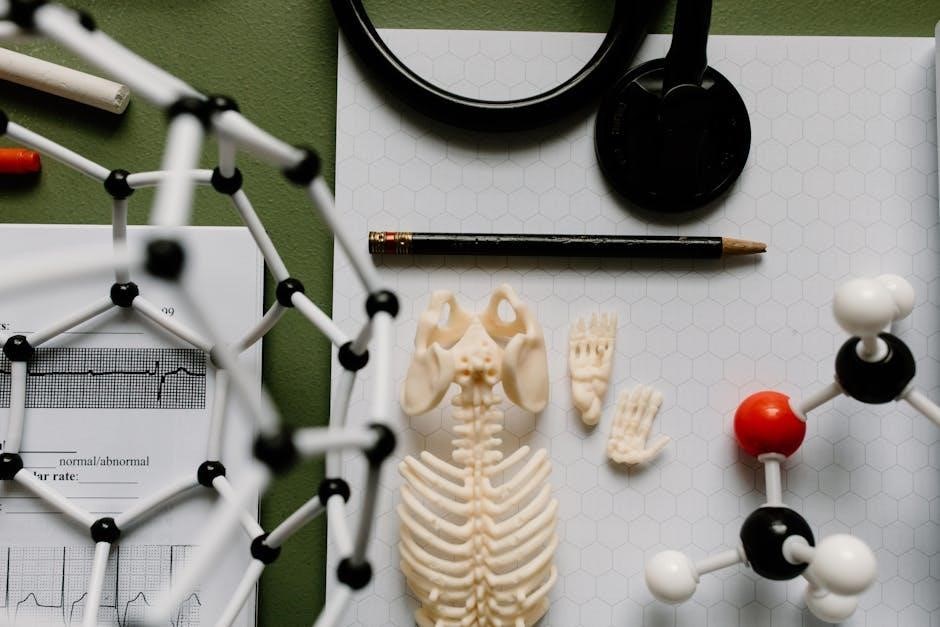
The Human Anatomy Laboratory Manual with Cat Dissections is supported by a range of online learning platforms and tools, designed to enhance the laboratory experience․ These digital resources include interactive simulations, 3D anatomical models, and virtual dissection tutorials, allowing students to explore complex structures from multiple angles․ Pearson’s Mastering A&P platform, integrated with the manual, offers pre-lab video coaching activities, bone and muscle identification exercises, and dissection videos․ Additionally, the platform provides quizzes, flashcards, and assessment tools to reinforce learning outcomes․ The manual is also available in eText format, enabling students to access content anytime, anywhere․ These online tools bridge the gap between traditional lab work and modern digital learning, ensuring a comprehensive and engaging educational experience․ They are an invaluable supplement to the manual, fostering deeper understanding and practical application of anatomical concepts․
Editions and Updates
The Human Anatomy Laboratory Manual with Cat Dissections is available in multiple editions, with the 8th and 9th editions offering updated content, enhanced visuals, and improved learning tools for students․
6․1 8th Edition Features and Updates
The 8th edition of the Human Anatomy Laboratory Manual with Cat Dissections introduces significant enhancements to facilitate a deeper understanding of anatomical concepts․ It features 29 exercises covering all body systems, ensuring comprehensive coverage․ The manual boasts a clear, engaging writing style paired with full-color illustrations, making complex structures more accessible․ Digital resources, including pre-lab video coaching and dissection videos, are seamlessly integrated to support interactive learning․ Additionally, the 8th edition aligns with Marieb’s textbooks, providing a cohesive educational experience․ These updates ensure that students have the tools needed for a successful lab experience, combining traditional dissection practices with modern educational technology․
6․2 9th Edition Enhancements
The 9th edition of the Human Anatomy Laboratory Manual with Cat Dissections builds on its predecessor with enhanced features designed to enrich the learning experience․ It includes 30 exercises covering all body systems, ensuring thorough exploration of anatomical structures․ The manual features improved full-color illustrations and a refined writing style for clarity․ Integration with Mastering A&P provides access to interactive tools, such as bone, muscle, and dissection videos, to reinforce learning․ Additionally, the 9th edition expands digital resources, offering 3D models and interactive simulations to support hands-on practice․ These updates ensure the manual remains a cutting-edge resource for students, blending traditional dissection-based learning with modern educational technology to cater to diverse learning styles and preferences․ This edition solidifies its reputation as a premier tool for anatomy education․
6․3 Comparison of Cat and Human Dissection Models
The Human Anatomy Laboratory Manual with Cat Dissections highlights the unique advantages of using cat models in anatomy education․ Cats provide a practical alternative to human cadavers, offering a similar arrangement of organs and systems that facilitate easier dissection․ However, there are notable differences, such as the smaller size of feline structures and variations in musculature and skeletal anatomy․ Despite these differences, cat dissections remain an effective teaching tool, allowing students to grasp fundamental anatomical principles․ The manual also emphasizes how the cat model aligns with human anatomy, making it an ideal choice for comparative studies․ By combining cat dissections with digital human anatomy resources, students gain a comprehensive understanding of both models, enhancing their ability to apply anatomical knowledge in clinical and academic settings․
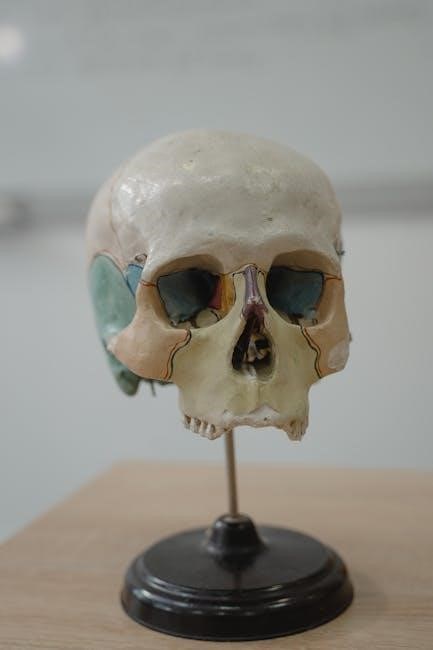
Purchase Options and Accessibility
The Human Anatomy Laboratory Manual with Cat Dissections is available in print and digital formats, including a downloadable PDF․ It can be purchased through Pearson or authorized retailers․ The eBook offers enhanced accessibility features, such as full-color illustrations and interactive tools, ensuring all students can engage with the material effectively․
7․1 Where to Buy the Manual
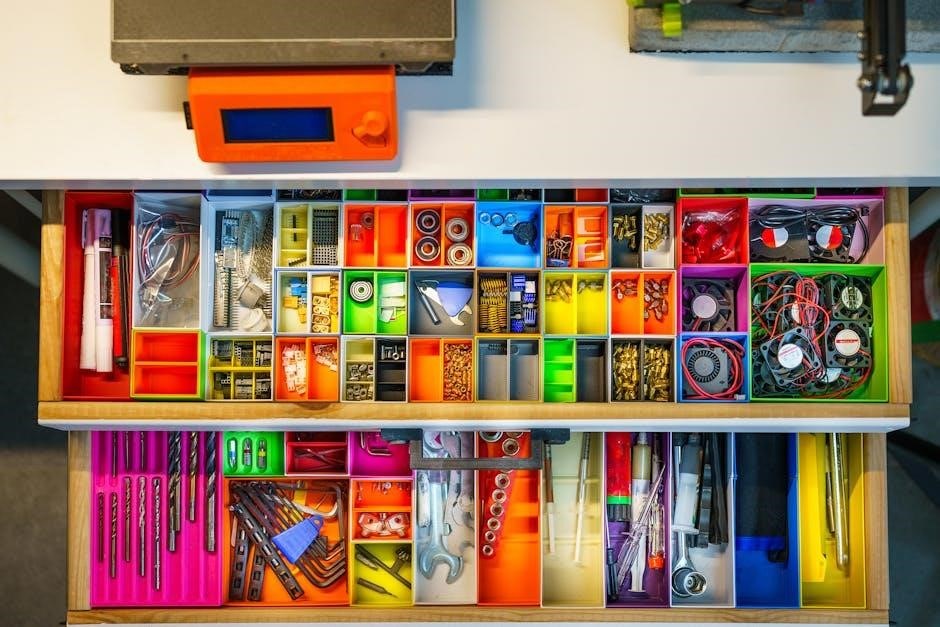
The Human Anatomy Laboratory Manual with Cat Dissections by Elaine Marieb is widely available for purchase through various retailers․ It can be bought directly from Pearson, the official publisher, as well as from online marketplaces like Amazon, Barnes & Noble, and eBay․ Students and educators can also find it at campus bookstores or through digital platforms offering eBooks․ The manual is available in both print and digital formats, with options for new or used copies․ Additionally, rental options are available for those seeking a cost-effective solution․ For international users, the manual can be purchased through authorized distributors or online retailers that ship globally․ Ensure to verify the edition (8th or 9th) and format (print or digital) before making a purchase to meet your specific needs․
7․2 Digital Edition and Accessibility Features
The Human Anatomy Laboratory Manual with Cat Dissections is also available in a digital edition, offering enhanced accessibility and convenience․ The digital version can be purchased through Pearson’s official website, as well as other online retailers like Amazon and Barnes & Noble․ This format is ideal for students who prefer e-learning, as it includes interactive features such as zoomable illustrations, searchable text, and cross-references to related content․ Accessibility features like text-to-speech functionality and adjustable font sizes ensure that all learners can benefit from the manual․ The digital edition is compatible with popular e-readers, tablets, and laptops, making it easy to access and study on the go․ Additionally, the digital version often includes supplementary materials, such as pre-lab videos and quizzes, to reinforce learning outcomes․
